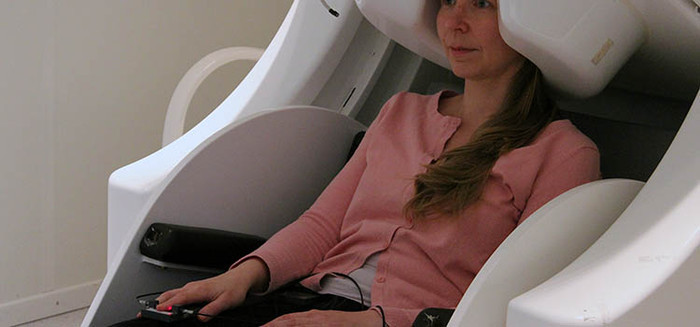Imaging Language
Research interests and projects
Modern non-invasive neuroimaging techniques have opened up enormous possibilities for studying the brain in action and for characterizing both normal and impaired neural processes. These opportunities are particularly valuable for the study of functions such as language that, in all their richness, are unique to humans. The past 20 years have seen an ever-increasing diversity in questions that can be asked using neuroimaging and in techniques and analysis methods that make those studies feasible. This development has, for the most part, happened separately within each imaging modality, such as functional magnetic resonance imaging (fMRI), with localization based on neural-activity-related oxygen consumption and blood flow, and magnetoencephalography (MEG), which detects the spatiotemporal progression of activity via the electromagnetic field associated with postsynaptic neuronal currents. This important phase has brought imaging methods to a point where there is enough data to lend them credibility in the form of reproducible activation patterns, even in high-level cognitive tasks. Neuroimaging has reached the level of maturity where we can – and should – ask how the different types of imaging measures may best be exploited as informative probes of cognitive processes and their disorders, and how such neural-level knowledge may help to address the computational nature of cognitive functions, specifically language. As the interpretation of imaging data depends heavily on the cognitive models one may entertain and, vice versa, the cognitive interpretations of imaging data are limited by the views afforded by each imaging method and analysis approach, these two lines of queries are critically intertwined.
In this research programme we aim at (i) understanding the type of cognitive processing that can be extracted with electrophysiological and hemodynamic activation studies, and attempting to tap into the cellular bases of the systems-level imaging signals via genetics; (ii) examining the functional relevance of network connectivity; (iii) using these various measures together in deciphering neural organization of advanced aspects of language function that also touch on other cognitive domains; and (iv) starting to construct brain-based computational models of language that, vice versa, can help to refine the description of the underlying neural processes. This type of work is necessary for a scientific description of language processing in a healthy human brain, but essential in providing the groundwork for an informed and efficient description and treatment of developmental and acquired language disorders.


